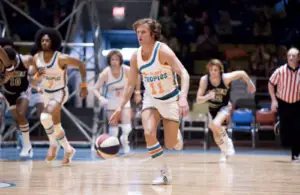
In both professional basketball and independent cinema, there’s a quiet structure that keeps audiences hooked. Whether you’re reading nba predictions today or watching a low-budget underdog sports drama, you’re really engaging with a set of familiar archetypes—characters and patterns that help us make sense of chaos and suspense.
Much like screenwriters use templates to guide character development and narrative arcs, data analysts and sports fans use player profiles, matchup histories, and performance metrics to anticipate how a game might unfold. Beneath the stats and storyboards, both disciplines rely on one timeless tool: the art of prediction through pattern recognition.
The Underdog: A Shared Cultural Favorite
Indie films have long favored the underdog—someone overlooked, underestimated, or flawed in just the right way. Think of movies like Hoop Dreams, The Way Back, or The Last Black Man in San Francisco. These characters fight uphill battles, facing long odds, internal conflict, and societal pressure. And more often than not, audiences root for them not just to win, but to grow.
This same emotional structure plays out in NBA matchups all the time. A fringe team with little playoff history goes up against a powerhouse. The narrative writes itself: guts versus glory, resilience over reputation. When looking at nba predictions today, bettors and fans alike are hunting for these narrative clues—teams playing with urgency, star players on redemption arcs, or chemistry breakthroughs that stats haven’t caught up with yet.
The Rivalry Trope: Conflict That Drives the Story
In cinema, no great protagonist exists without an antagonist. Rivalries give a story stakes, tension, and identity. From Rocky vs. Apollo to Bird vs. Magic in the Winning Time series, the best rivalries carry a blend of personal history and public spectacle.
The NBA thrives on these same dynamics. Whether it’s Celtics vs. Lakers or Curry vs. LeBron, rivalries fuel headlines, ticket sales, and fan debates. But they also inform how fans interpret performance trends. A player’s history against a specific opponent might carry more weight than season averages. It’s emotional data—less quantifiable, but just as real to viewers trying to guess what comes next.
The Redemption Arc: Everyone Loves a Comeback
No narrative device lands harder than the comeback. In indie films, it might be a character re-entering society after trauma, addiction, or exile. In the NBA, it’s the player returning from injury, a veteran proving they’ve still got something left, or a team bouncing back from a losing streak.
What’s interesting is how both films and fans predict redemption. In cinema, it’s usually telegraphed by a shift in lighting, score, or script tone. In basketball, it’s hinted at by improved stats over a short stretch, changes in minutes, or adjustments in team strategy. These cues help fans (and oddsmakers) decide when someone is on the verge of flipping their story.
According to a study from the USC Annenberg School for Communication, redemption arcs are among the most emotionally resonant story types, regardless of format. This helps explain why audiences can be just as glued to a comeback story on the court as they are on screen.

Archetypes Behind the Numbers
Data-driven NBA predictions might seem clinical, but they’re really just formalized storytelling. A team’s “clutch performance” rating is another way of asking if they’re good under pressure—a classic hero’s trial. A “high-usage isolation scorer” reads like a lone wolf archetype. Even coaching styles echo film tropes: the innovative tactician vs. the motivator, the disciplinarian vs. the player’s coach.
This overlap allows sports fans to become storytellers in their own right. They interpret plot twists (injuries, trades, buzzer-beaters) and forecast endings based on foreshadowing (schedules, momentum, depth). It’s not just about who wins—it’s about who plays the roles best.
Why It Works: Pattern Recognition in Entertainment
What connects indie film lovers and NBA enthusiasts is their appreciation for structure beneath unpredictability. Both groups crave stories with depth, even if they’re not told the same way twice. Whether analyzing a screenplay or a stat sheet, they’re looking for tension, payoff, and characters who break molds—or fit them a little too well.
By recognizing familiar archetypes, we make sense of complexity. We don’t need to know the ending to enjoy the process. We just need to feel like we understand the roles being played—and the stakes riding on each choice.

